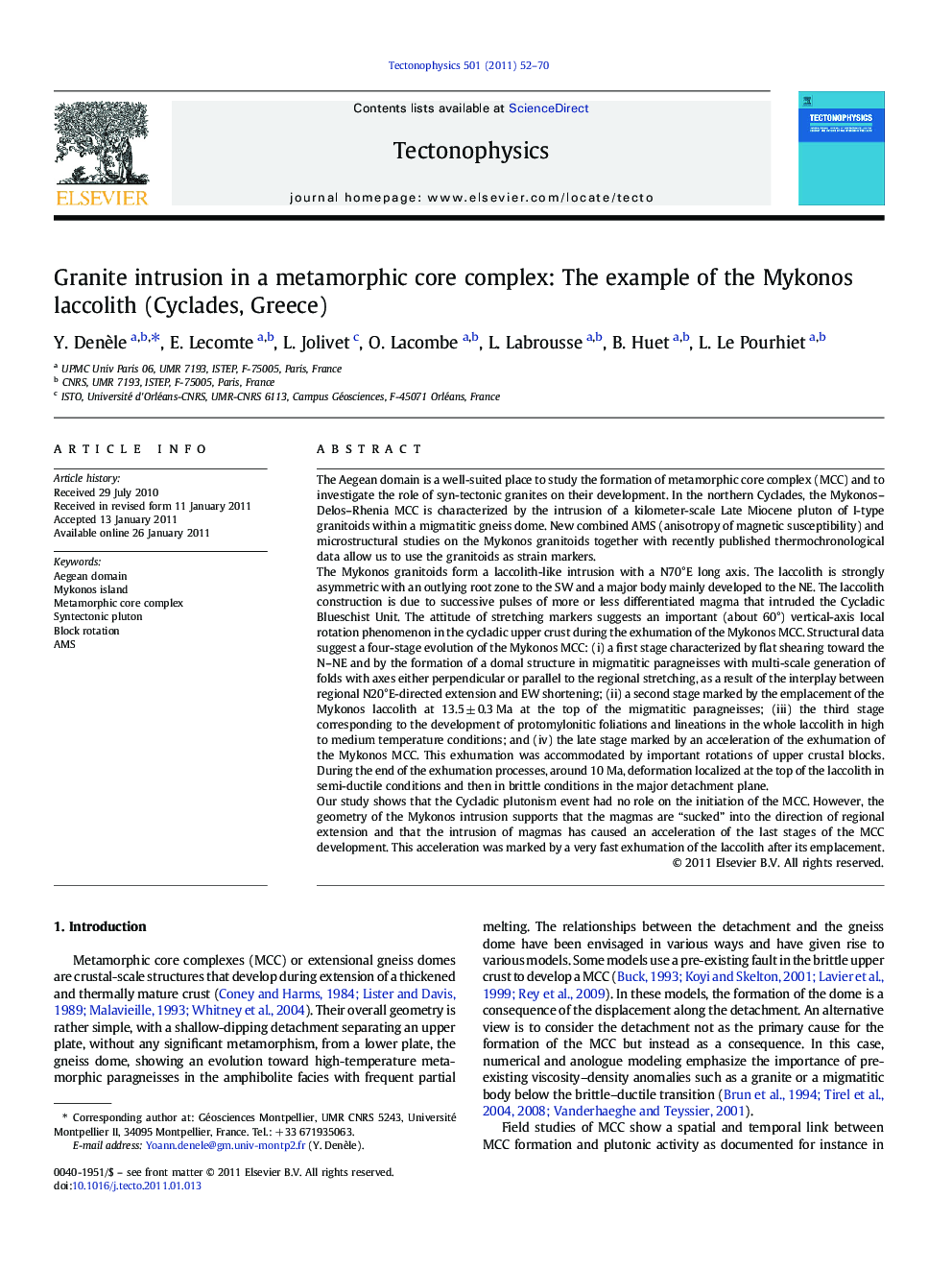| کد مقاله | کد نشریه | سال انتشار | مقاله انگلیسی | نسخه تمام متن |
|---|---|---|---|---|
| 4693208 | 1636850 | 2011 | 19 صفحه PDF | دانلود رایگان |

The Aegean domain is a well-suited place to study the formation of metamorphic core complex (MCC) and to investigate the role of syn-tectonic granites on their development. In the northern Cyclades, the Mykonos–Delos–Rhenia MCC is characterized by the intrusion of a kilometer-scale Late Miocene pluton of I-type granitoids within a migmatitic gneiss dome. New combined AMS (anisotropy of magnetic susceptibility) and microstructural studies on the Mykonos granitoids together with recently published thermochronological data allow us to use the granitoids as strain markers.The Mykonos granitoids form a laccolith-like intrusion with a N70°E long axis. The laccolith is strongly asymmetric with an outlying root zone to the SW and a major body mainly developed to the NE. The laccolith construction is due to successive pulses of more or less differentiated magma that intruded the Cycladic Blueschist Unit. The attitude of stretching markers suggests an important (about 60°) vertical-axis local rotation phenomenon in the cycladic upper crust during the exhumation of the Mykonos MCC. Structural data suggest a four-stage evolution of the Mykonos MCC: (i) a first stage characterized by flat shearing toward the N–NE and by the formation of a domal structure in migmatitic paragneisses with multi-scale generation of folds with axes either perpendicular or parallel to the regional stretching, as a result of the interplay between regional N20°E-directed extension and EW shortening; (ii) a second stage marked by the emplacement of the Mykonos laccolith at 13.5 ± 0.3 Ma at the top of the migmatitic paragneisses; (iii) the third stage corresponding to the development of protomylonitic foliations and lineations in the whole laccolith in high to medium temperature conditions; and (iv) the late stage marked by an acceleration of the exhumation of the Mykonos MCC. This exhumation was accommodated by important rotations of upper crustal blocks. During the end of the exhumation processes, around 10 Ma, deformation localized at the top of the laccolith in semi-ductile conditions and then in brittle conditions in the major detachment plane.Our study shows that the Cycladic plutonism event had no role on the initiation of the MCC. However, the geometry of the Mykonos intrusion supports that the magmas are “sucked” into the direction of regional extension and that the intrusion of magmas has caused an acceleration of the last stages of the MCC development. This acceleration was marked by a very fast exhumation of the laccolith after its emplacement.
Research Highlights
► Syn-detachment granitic bodies correspond to strongly assymetrical laccolith.
► Very fast exhumation of a MCC can be accomodated by rotation of upper custal blocs.
► Pluton emplacement has a limited triggering effect on the Cycladic MCC development.
Journal: Tectonophysics - Volume 501, Issues 1–4, 25 March 2011, Pages 52–70